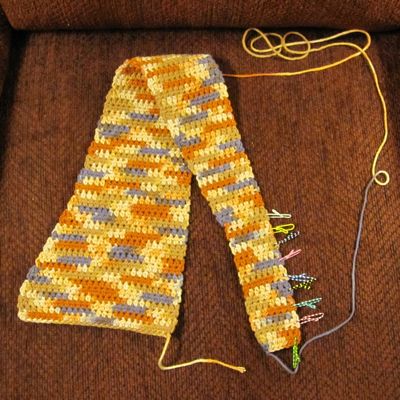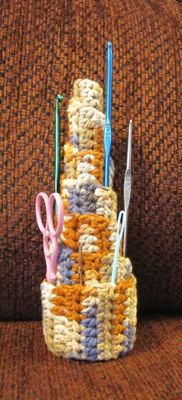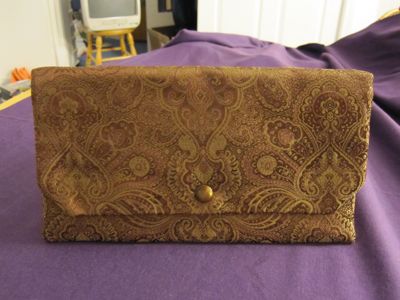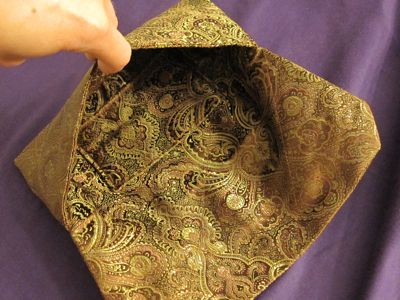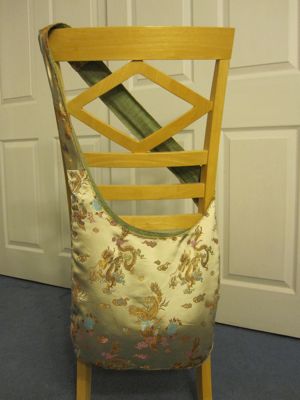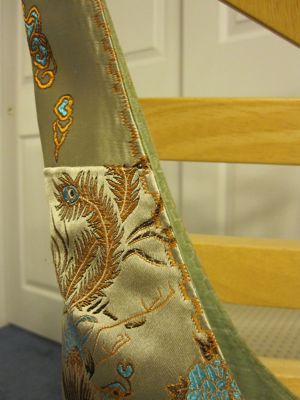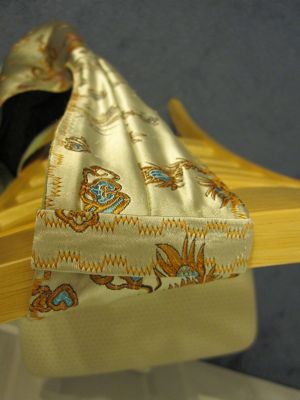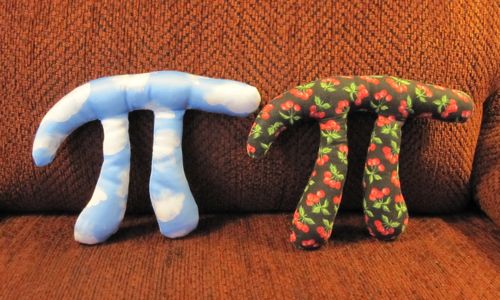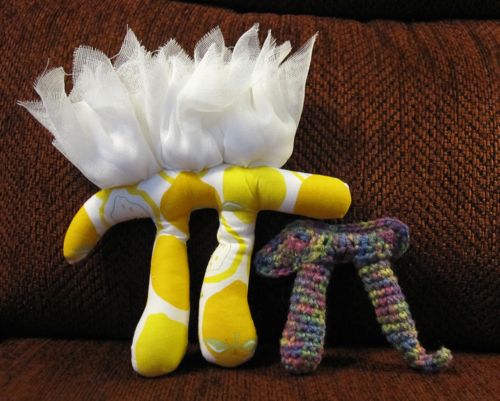I crochet primarily in a recliner in my living room, with a small end table next to me and a lamp on each side. There’s not a lot of room, and the floor around the chair is covered with yarn, patterns, and notebooks. A rectangular tin that originally held fancy soap sits open on the end table, the body filled with reserved and leftover embroidery floss, the lid with current materials – including hooks. The steel ones disappear inside, and the aluminum ones stick out at one end. All of them catch on things and go missing periodically.
When I first learned how to knit, several years ago, I made needle and hook cases out of wool and calico. I still think they’re among the most attractive functional objects I’ve sewn:
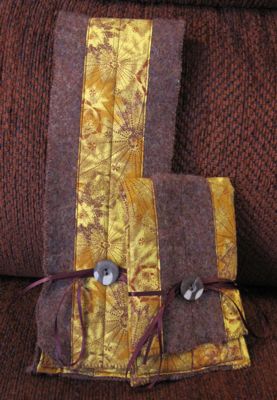
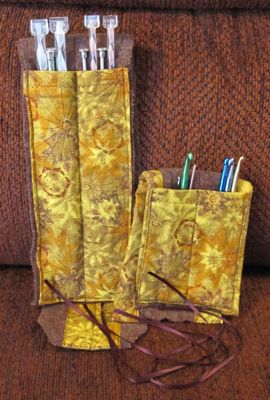
However, they leave a little to be desired when it comes to accessibility. I quit knitting because it always felt like a chore, but the hook case has stuck around (and will continue to indefinitely, for travel purposes). If I ever pick up Afghan/Tunisian crochet the needle case will be useful for those hooks.
More recently I crocheted a lemon and stuffed it firmly with yarn ends to use as a pincushion.
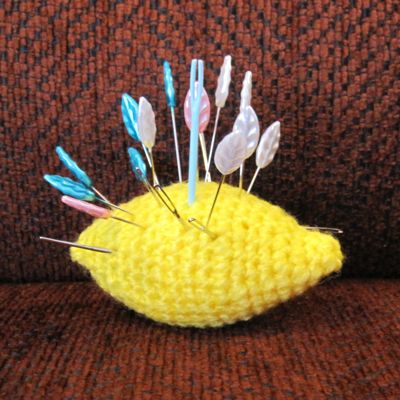
Unfortunately, blunt needles have quite a time with it, and even the sharp pins can’t be inserted just any which way.
Then I found the Tower of Babel. This is the answer to my dreams: a long tapered strip, rolled into a tiered cylinder. Between the tiers you can insert hooks, needles, pins, even scissors, storing them visibly and at hand with a very small footprint. Certainly I still expect the current hook(s) to be lying around on the end table, but my most commonly-used hooks (E, F, and the 2.75mm steel) can live there. I made it in a day. As a bonus, I was able to use some wonderful cotton yarn whose colors haven’t worked for amigurumi.
